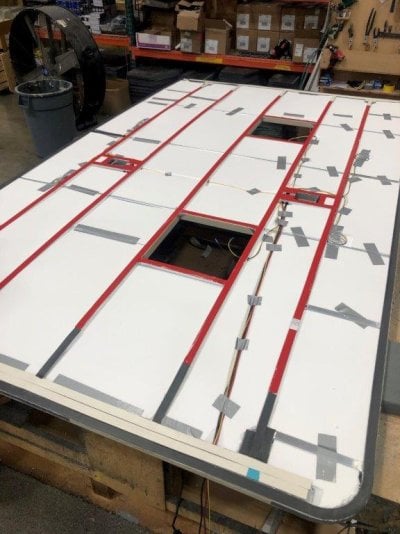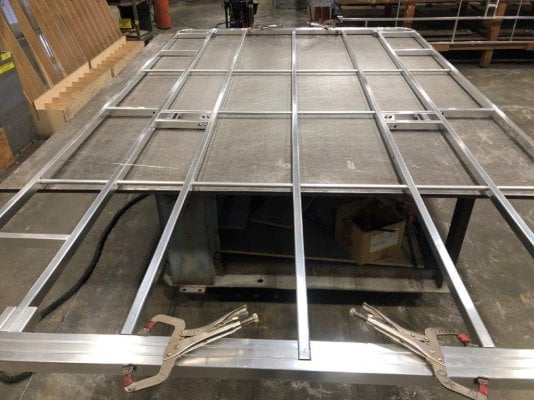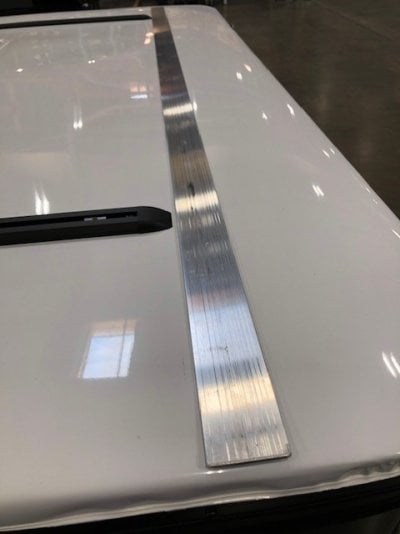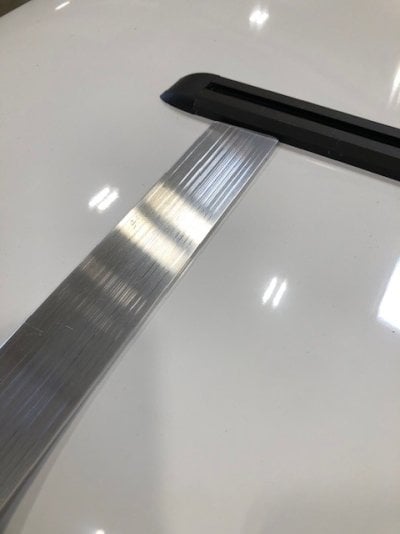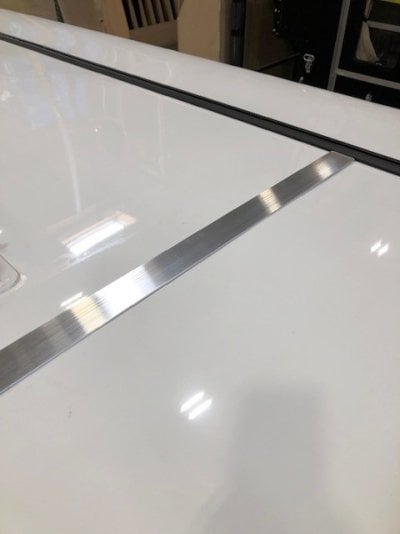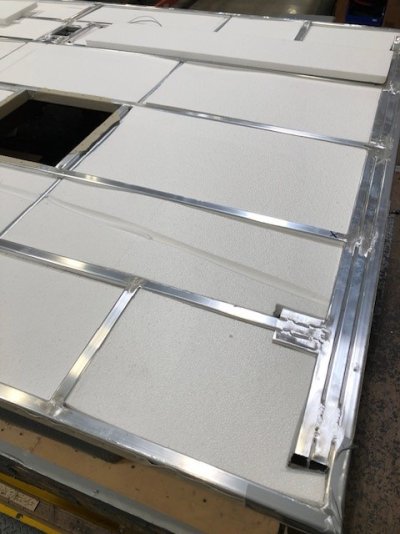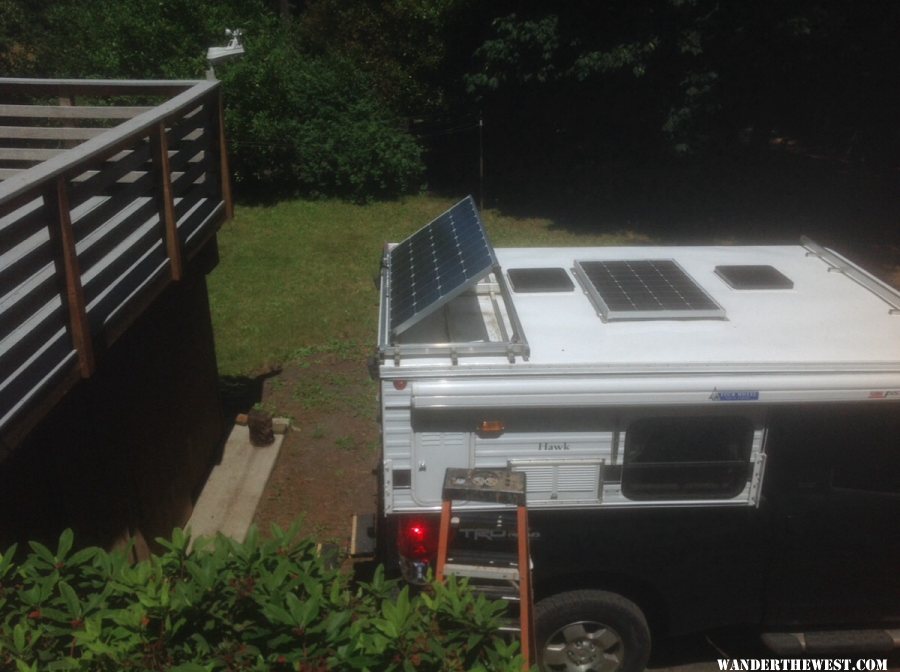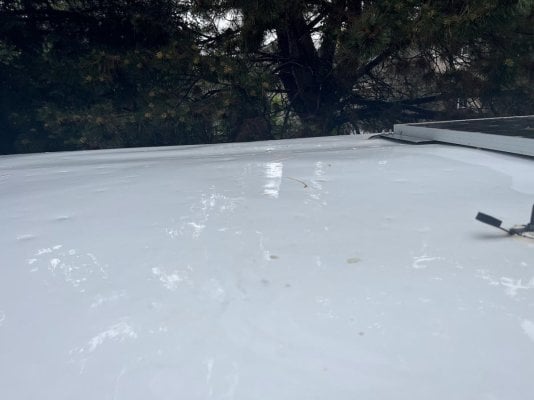Hello Phil
Sorry for the delay.
We have been on the road for the last week at the Overland Expo in Flagstaff, AZ.
You wrote:
<< How is the roof panel secured to the frame? >>
All of the one-piece smooth aluminum roof skins are attached to the aluminum roof framing with 3M VHB double sided tape.
This tape is very expensive and won't come off. A small roll of 3M VHB tape is approx. $100 (if that helps give you an idea on the quality of the VHB tape). It takes an air chisel for us to remove a roof skin.
There is no way for the aluminum roof skin to come loose. It is not glued. Once the 3M VHB tape is secured, it won't come loose.
On the newer campers, we do glue the foam insulation in the ceiling to the bottom of the roof skin to keep the insulation secure, and also keep it from wiggling (the foam insulation would squeak sometimes in the early days when we didn't glue the insulation to the bottom of the roof skin).
<< Can anything be done to lessen the "tin canning"? >>
Years back, we did have a few customer complaints. But the shop changed a few things and I have not heard of the issue on newer campers for quite a few years. What did they change in the shop back then?? They started gluing the foam insulation to the bottom of the roof skin in the ceiling. What this seems to have done is stop the movement of the aluminum roof skin in-between the roof frame members from moving up and down as much in windy days. We build approx. 1200 - 1300 campers a year. So when there is a problem, we usually hear about it very quickly (due to the volume we do). The oil canning posts have almost disappeared.
From time to time if a showroom camper, a demo camper, or we are at a trade show, and the camper is closed up (windows are closed, window flaps are closed, vents are closed, port holes are closed, etc.) and I push on the soft pop-up fabric from the inside, I can get the camper roof to occasionally "pop" (every once in a while). Basically simulating a windy night.
The only possible things to maybe (maybe?) to try to lessen the "popping" noise would be . . .
(just thinking out loud here)
1. Maybe try opening up one of the turn buckle port holes a little at night (on those windy nights) to allow all of the air inside the camper that is trapped, to come in and out a little (surge in & out a little), instead of pressurizing the air tight interior, which pushes up the roof skin in-between the aluminum roof frame members (oil canning).
2. Try parking the truck in a different direction. For example, if the wind in hitting the side of the camper and the roof is popping, turn the truck and park directly in to the wind. The soft sides of the camper (pop-up fabric) will have a lot less surface area to billow in & out.
3. Maybe leave the soft sides windows bungee cords attached at night to the front and rear windows, to maybe keep the pop-up side a little tighter, so that the pop-up fabric does not billow in & out quite as much on the windy nights ?
4. Last but not least (a last resort effort), maybe glue or VHB tape some flat aluminum stock from side to side on the camper roof. Having flat stock across the roof (side to side) will add some stability and rigidity to the flat aluminum roof skin, maybe (maybe?) reducing the movement of the roof skin in-between the roof frame members. Would be an easy thing to try. No extra holes would be needed in the roof to try this. If there is a downside to this, the only thing I can think of it that it would look a little weird. But ... if you painted the aluminum flat bar white on the top, before securing it to the roof, it would look better (blend in).
5. Maybe bring some small, flat sang bags to lay flay on the roof. I have never heard of any customers trying this, but I think I saw the idea posted in this thread as something to try. This would probably be the last thing I would try.
I will see if I can get some sample pictures to add to this post/thread (later today), to better help with a visual on the ideas mentioned above.
Hope this helps with some ideas.
Stan
___________________________________________________________________________________________________________
Wallowa said:
I have increased roof "tin canning" during windy conditions. My 2016 Hawk has the single sheet aluminum roof panel. Why this popping of the roof in a wind has been increasing is a mystery.
I do not know how the roof panel is attached to the roof frame of the Hawk. I suspect it is glued to the frame; hence after miles of rough off-roading the glue is failing and the roof panel begins to flap more.
How is the roof panel secured to the frame?
Can anything be done to lessen the "tin canning"?
My Hawk roof has the FWC Yakima rails with two Zamp solar panels [170/160w] and two fans.
Thanks for any insights.
Phil

